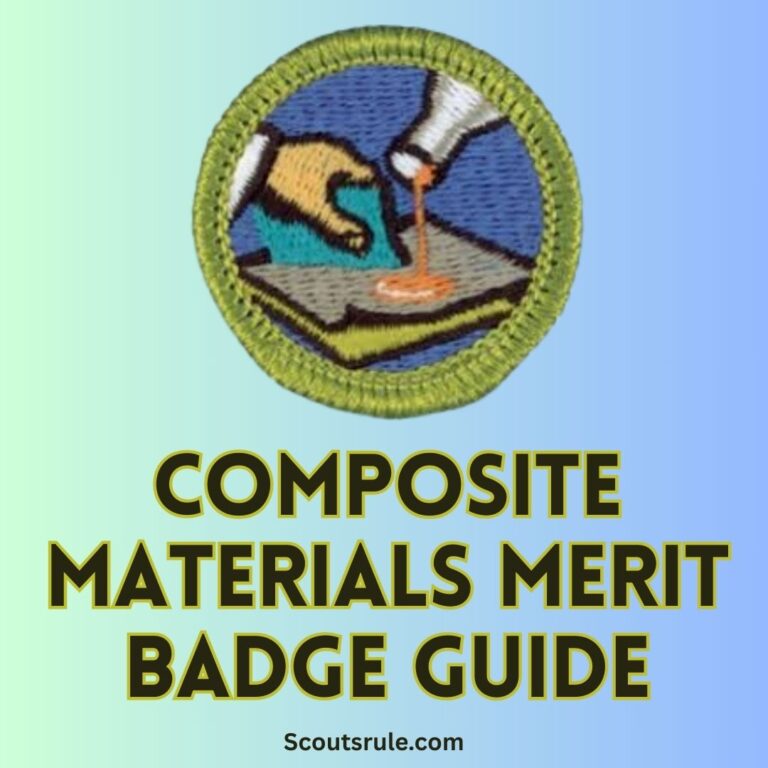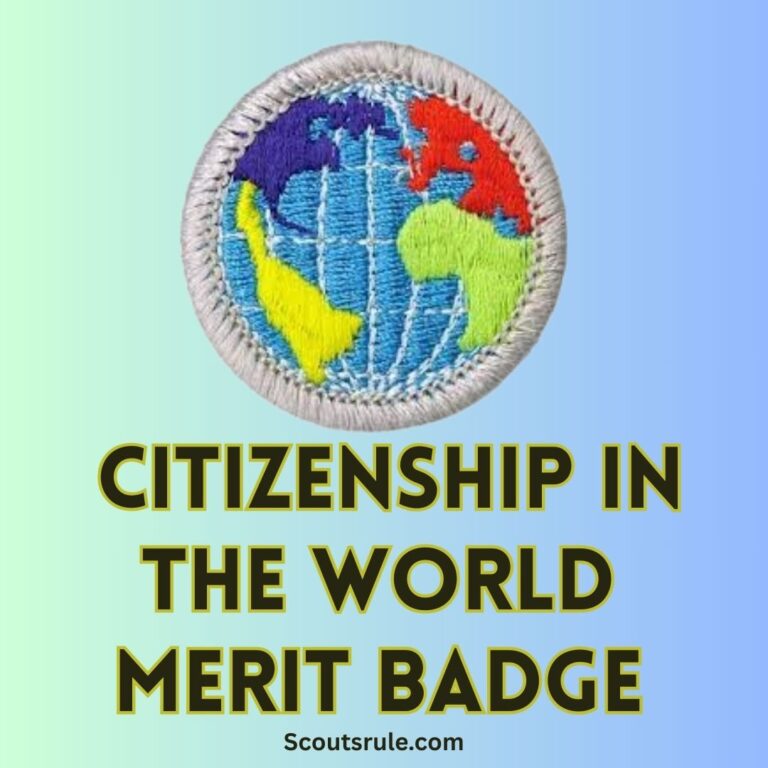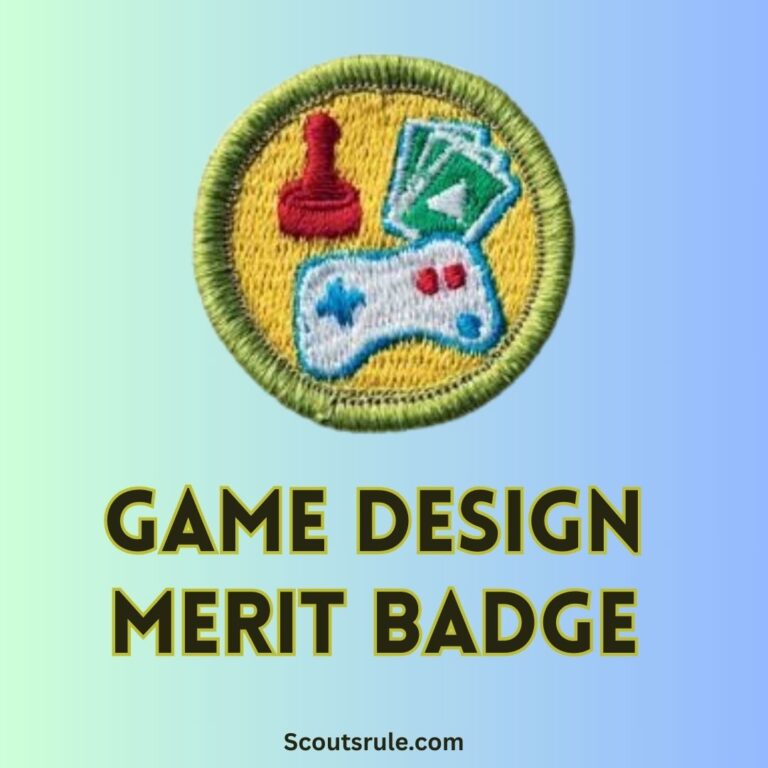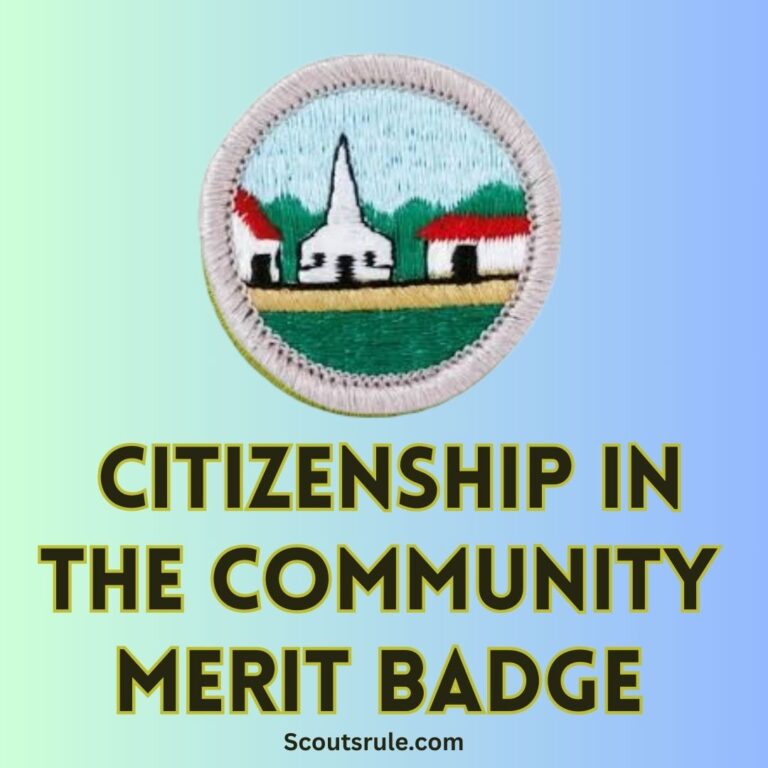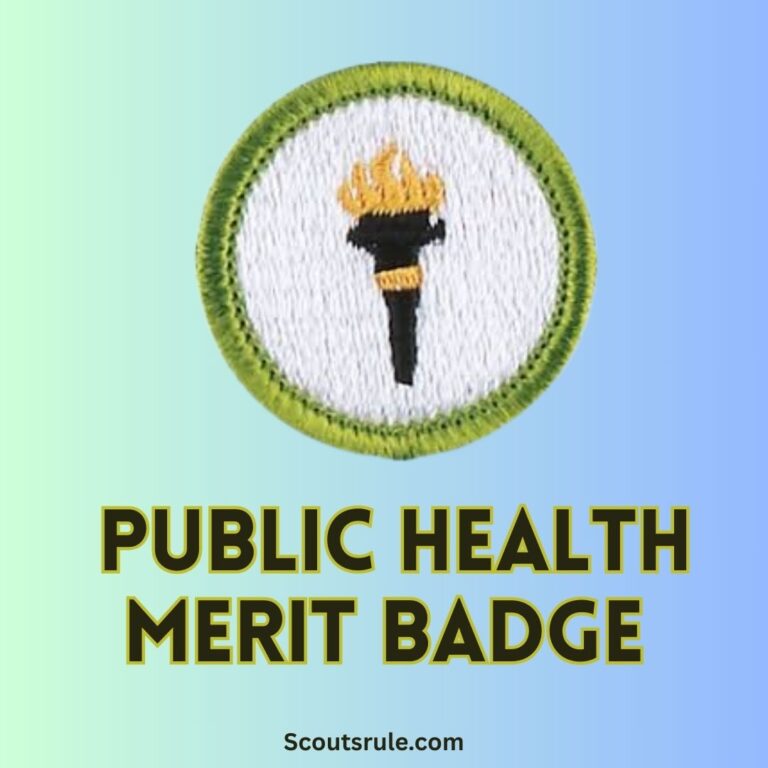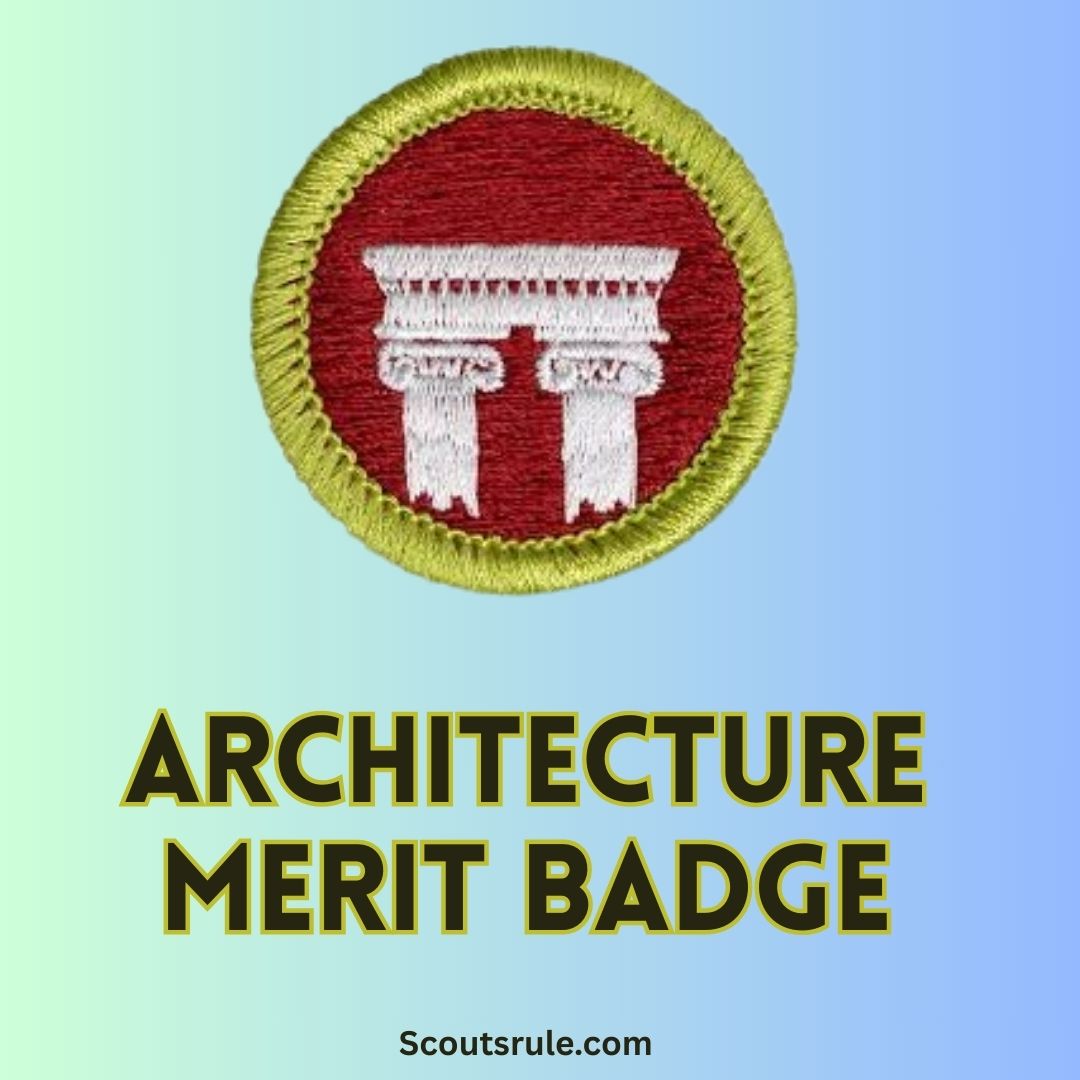
This guide is designed to help you explore the rapidly evolving world of digital technology—from understanding its historical development and practical applications to learning about hardware, software, and the ethical responsibilities that come with using digital media. Whether you’re interested in programming, multimedia production, cybersecurity, or simply understanding how digital tools have transformed modern society, this guide will walk you through each requirement step by step, offer practical project ideas, and provide strategies for documenting and reflecting on your work.
Digital technology is not just about computers or mobile devices; it has become an inseparable part of our daily lives. By pursuing this merit badge, you will gain insight into how digital devices work, explore emerging technologies, and critically examine the role of digital systems in communication, business, education, and entertainment. You will also learn to use digital tools safely and responsibly—a crucial skill in today’s interconnected world.
Post Contents
- Introduction: The Digital Revolution and You
- 2. Purpose and Objectives of the Digital Technology Merit Badge
- 3. The Evolution and Impact of Digital Technology
- 4. Overview of the Merit Badge Requirements
- 5. In-Depth Look at Specific Requirements and Activities
- 6. Practical Projects and Activities
- 7. Strategies for Effective Research, Documentation, and Reflection
- 8. Additional Tips, Resources, and Tools
- 9. Conclusion: Embracing Digital Technology for a Better Tomorrow
Introduction: The Digital Revolution and You
In this modern era, digital technology touches nearly every aspect of life. From smartphones and computers to advanced systems in healthcare, transportation, and education, digital technology shapes how we communicate, solve problems, and access information. The Digital Technology Merit Badge provides you with a window into this innovative world. It is an opportunity to learn about the developments that have transformed our society and to explore how digital tools work. By studying digital technology, you prepare yourself not only to use these tools effectively but also to think critically about the ethical and social implications of living in an increasingly digital world.
Whether you want to create your own software, build digital projects, or simply understand the evolving landscape of technology, this badge will challenge you to expand your knowledge and develop new skills. As you study, you will encounter topics ranging from the basic components of a computer to discussions about cybersecurity, privacy, and digital citizenship.
2. Purpose and Objectives of the Digital Technology Merit Badge
The primary purposes and objectives of the Digital Technology Merit Badge are:
- Educational Enrichment: Gain a comprehensive understanding of digital technology—its history, development, and current applications. Learn how digital devices, software, and networks form the backbone of modern communication and commerce.
- Practical Application: Develop hands-on skills in using digital tools and software. Whether it’s assembling a computer, programming a simple application, or creating digital media, you’ll gain practical experience that sharpens both technical proficiency and creative problem-solving.
- Critical Analysis and Ethical Reflection: Study the ethical, legal, and social issues associated with digital technology. Understand topics such as digital privacy, cybersecurity, and the responsible use of technology. Develop a responsible approach to using digital tools.
- Civic Engagement: Explore the societal impact of digital technology, including how it affects education, employment, and daily life. This knowledge will prepare you to be an informed citizen capable of contributing to discussions about public policy and technological innovation.
- Career Exploration: Learn about the many career paths related to digital technology—from software engineering and graphic design to cybersecurity and digital media production. This badge offers insights into the educational pathways and skills necessary for success in these fields.
Through these goals, the Digital Technology Merit Badge not only enhances your technical skills but also cultivates an appreciation for the broader impact of digital innovation on society.
3. The Evolution and Impact of Digital Technology
Digital technology has evolved dramatically over the past several decades, fundamentally altering how we interact with the world. Understanding this evolution is key to appreciating its current importance.
3.1 A Brief History of Computing and Digital Media
- The Early Days: The journey began with early computing devices, such as the abacus and mechanical calculators. The mid-20th century saw the development of electronic computers, which transformed previously manual processes into automated, high-speed computations.
- The Birth of the Microprocessor: The invention of the microprocessor in the early 1970s marked a turning point. It led to the creation of personal computers, making digital technology accessible to the general public.
- The Digital Revolution: With the advent of the Internet in the late 20th century, digital communication, e-commerce, and information sharing exploded. Today, advanced digital systems underpin everything from smartphones and tablets to cloud computing and artificial intelligence.
- Impact on Society: Digital technology has redefined communication, education, commerce, entertainment, and even social interactions. It has fostered global connectivity and created new industries, while also raising important questions about privacy, security, and equal access.
3.2 Modern Digital Technologies and Their Uses
Today’s digital landscape is broad and diverse. Consider the following areas:
- Hardware: Devices such as computers, smartphones, tablets, and wearables are powered by advanced microprocessors, memory storage technology, and high-speed connectivity.
- Software: From operating systems and productivity suites to cutting-edge apps and video games, software programs help us work, communicate, and play.
- Digital Media: The rise of social media platforms, streaming services, and digital content creation has artfully reshaped how we consume and share information.
- Networking and Communication: The Internet, wireless networks, and satellite technologies connect millions of devices globally. They support real-time communication, data exchange, and collaboration.
- Emerging Technologies: Innovations such as blockchain, machine learning, and augmented/virtual reality are poised to further transform aspects of commerce, health care, education, and beyond.
This evolution is not just a matter of technological progress; it has reshaped social structures, influenced worldwide economies, and changed daily habits for billions of people.
4. Overview of the Merit Badge Requirements
The Digital Technology Merit Badge requires you to explore various facets of digital technology through research, practical projects, and critical discussions. Though the exact requirements may vary slightly over time, they generally cover the following key topics:
4.1 Understanding the Digital Landscape
- Definition of Digital Technology: Define what digital technology means in today’s world. Explain the components (hardware, software, networks) that collectively constitute the digital landscape.
- Historical Development: Research and write about key events that have shaped digital technology—from the invention of the computer to the rise of mobile devices and the Internet.
4.2 Exploring Digital Tools and Devices
- Hardware Analysis: Identify and describe the components of a personal computer or a mobile device. Learn about microprocessors, memory, storage devices, input/output systems, and how these hardware components work together.
- Software Fundamentals: Discuss the role of software in digital technology. Describe operating systems, application software, and the importance of user interfaces in making complex technology accessible.
4.3 Ethical, Legal, and Social Issues in Digital Technology
- Digital Citizenship: Explore what it means to be a responsible digital citizen. This includes issues like data privacy, online etiquette, and cybersecurity.
- Cyber Ethics: Research topics such as intellectual property in the digital age, the impact of social media on society, and the ethical implications of new technologies (e.g., artificial intelligence, surveillance).
4.4 Digital Project Planning and Execution
- Project Proposal: One often essential component is to plan and execute a digital project. This might involve creating a website, developing a simple computer program, or producing a multimedia presentation.
- Project Documentation: You will be expected to document your planning process—including brainstorming, design, testing, and final execution. This documentation should be detailed and reflective, showing what you learned through hands-on experimentation.
4.5 Career Opportunities and Future Trends
- Exploring Careers: Identify and describe at least 15 jobs relating to digital technology. This may include roles such as software developer, network engineer, cybersecurity analyst, digital marketer, data scientist, and many more.
- Future Trends: Research emerging trends in digital technology and reflect on how these trends could influence your future career choices or impact society.
5. In-Depth Look at Specific Requirements and Activities
Now let’s dive deeper into some of the requirements and discuss potential activities, research tasks, and project ideas.
5.1 Researching the History and Impact of Digital Technology
Your initial research should cover seminal moments in the evolution of digital technology:
- Key Milestones: Research the development of the transistor, the invention of the microprocessor, the launch of the first personal computer, and the exponential growth of the Internet.
- Resource Identification: Use sources such as encyclopedias, historical journals, documentary films, and reputable websites (e.g., computer history museums or technology-focused education sites).
- Personal Reflection: Write an essay or prepare a presentation explaining why these historical advancements influence our daily lives today. Reflect on how they have shaped modern industries and global connectivity.
5.2 Analyzing Hardware, Software, and Digital Networks
Gain hands-on experience with digital devices:
- Dissecting a Computer or Smartphone: If possible, work with an old or unused computer or smartphone. Identify the key components (motherboard, CPU, hard drive, RAM, etc.) by researching diagrams or online tutorials.
- Software Exploration: Experiment with different operating systems. Compare basic functionalities of Windows, macOS, or Linux. Alternatively, try using a mobile operating system like Android or iOS.
- Networking Fundamentals: Learn about how data is transmitted over the Internet. Explore basic networking concepts such as IP addresses, routers, and the structure of the World Wide Web.
Document your hands-on processes with step-by-step photos, diagrams, or recorded videos. Explaining what each component does strengthens your understanding and shows your mentor that you have engaged with the material practically.
5.3 Exploring Digital Citizenship and Cyber Ethics
Digital technology isn’t just about hardware and software—it also includes the responsibility of being a good citizen online:
- Ethical Scenarios: Create a scenario-based discussion about digital privacy, cyberbullying, or the ethical use of digital content. How should individuals balance freedom of expression with the need to protect personal data?
- Legal Research: Research major laws and regulations that govern digital interactions, such as the General Data Protection Regulation (GDPR) in Europe or the Children’s Online Privacy Protection Act (COPPA) in the United States. Discuss how these laws aim to secure digital rights.
- Interactive Activity: Form a group discussion with your peers about the responsibilities of digital citizenship. Develop case studies or role-play exercises that simulate online decision-making scenarios.
Write a report summarizing your findings on cyber ethics and responsible digital behavior. Include personal reflections on how these issues affect you and your community.
5.4 Developing a Digital Project
One of the key components of this merit badge is to conceive and develop a digital project. This project demonstrates your ability to apply what you’ve learned in a creative, practical way.
- Project Ideas: Consider projects such as:
- Creating a personal or community website.
- Developing a simple mobile application or game using beginner-friendly platforms like MIT App Inventor.
- Producing a digital video or multimedia presentation on a topic such as the history of digital technology, the future of the Internet, or how digital platforms influence culture.
- Project Planning: Write a project proposal that outlines objectives, target audience, design ideas, and the technologies you plan to use. Identify the resources needed (software, hardware, internet access) and set realistic timelines.
- Execution: Work through the project in stages. For example, if you are building a website, start with a mock-up or wireframe, then proceed to design, content creation, coding (if applicable), testing, and finally, launch.
- Documentation: Throughout the process, keep a detailed record. Document your brain-storming sessions, design iterations, technical challenges, and solutions. Explain what you learned from both successes and setbacks.
This project is your opportunity to showcase your creative and technical abilities. It also demonstrates how digital technology can be used to address specific needs or share information with a broader audience.
5.5 Exploring Career Opportunities in Digital Technology
The final aspect of the merit badge focuses on the future:
- Identify Careers: Research and list at least 15 career paths that relate to digital technology. These might include roles in software development, network administration, cybersecurity, digital marketing, graphic design, data analytics, and more.
- Interviews and Shadowing: If possible, contact professionals working in these fields. You could request interviews or even visit local companies.
- Report and Reflection: Summarize your findings in a written report or presentation. Reflect on which careers most strongly align with your interests and how the skills you’ve gained through this merit badge might help in reaching your goals.
Understanding career opportunities not only reinforces your learning but also opens your eyes to the vast potential for innovation and employment in an increasingly digital world.
6. Practical Projects and Activities
Putting theory into practice is a critical part of the Digital Technology Merit Badge. Here are some suggested projects and activities:
6.1 Building or Programming a Simple Application
- Coding Projects: Use a beginner-friendly programming language, such as Scratch, Python, or JavaScript, to develop a simple application. Consider projects like a digital quiz, a basic game, or a calculator.
- Project Phases: – Idea Generation: Brainstorm what problem your application might solve or how it can entertain. – Design: Sketch out the user interface and plan the functionality. – Implementation: Write the code. – Testing: Debug and refine the application until it functions smoothly.
- Document Your Code: Include comments in your code and prepare a brief explanation of how your application works.
6.2 Creating a Digital Presentation or Multimedia Project
- Presentation Projects: Use digital tools such as PowerPoint, Google Slides, or video editing software to present a topic related to digital technology—for example, “The Evolution of the Internet” or “How Digital Innovation Shapes Modern Education.”
- Multimedia: Incorporate images, video clips, audio segments, and animations to make your presentation engaging.
- Narration: Record a voiceover or script that explains each slide or section.
- Peer Feedback: Present your project to your troop or classmates to get feedback on clarity and content.
6.3 Using Digital Tools for Problem Solving and Communication
- Digital Literacy: Develop skills in using common productivity software (word processing, spreadsheets, and presentation tools).
- Collaborative Tools: Engage in a group project using collaborative platforms like Google Workspace or Microsoft Office 365. Learn how to work together to create a digital report or shared presentation.
- Online Research and Documentation: Practice advanced online research techniques, learn to evaluate the credibility of sources, and use citation tools to document your sources accurately.
These projects allow you to apply learned skills in practical settings. They highlight both the creative and analytical aspects of digital technology, preparing you for future academic and professional endeavors.
7. Strategies for Effective Research, Documentation, and Reflection
Success in the Digital Technology Merit Badge hinges on thorough research and careful documentation:
- Organize Your Research: Use digital tools like reference management software or even a dedicated notebook to track websites, articles, videos, and interview details.
- Maintain a Digital Portfolio: Create a folder (on your computer or in the cloud) where you store your project proposals, coding files, multimedia presentations, photographs of your work, and notes from interviews or field visits.
- Regular Updates: As you work through the requirements, update your portfolio regularly. This habit ensures you don’t miss out on documenting key moments or adjustments.
- Reflect Frequently: Write a weekly reflection on what you learned, obstacles you overcame, and how your skills have improved. These reflections provide valuable insight for your merit badge counselor and help you see your growth over time.
- Seek Constructive Criticism: Regularly consult with your merit badge counselor, teachers, or peers. Their feedback can help refine your projects and improve the quality of your documentation.
Documenting your work properly not only ensures that you meet the badge requirements but also helps you build a personal record of your journey in digital technology—a portfolio that could be useful long after you earn the badge.
8. Additional Tips, Resources, and Tools
To further enhance your progress in earning the Digital Technology Merit Badge, consider these additional resources and ideas:
- Online Tutorials and Courses: Platforms like Khan Academy, Codecademy, and Coursera offer free courses related to programming, digital media production, and cybersecurity. Use these to deepen your understanding and gain useful skills.
- Digital Technology News Sites: Sites like TechCrunch, Wired, or Ars Technica provide up-to-date information on emerging trends and innovations. Staying informed about current events in digital technology can enrich your projects and reflections.
- Local Makerspaces and Technology Clubs: Join local clubs or makerspaces where you can collaborate with others, share ideas, and gain hands-on experience with digital tools, robotics, or programming.
- Software Tools: Familiarize yourself with free or open-source software such as GIMP (for image editing), Audacity (for audio editing), or Blender (for 3D modeling). These tools can be invaluable for your multimedia projects.
- Visit a Tech Museum or Company: If possible, arrange a field visit to a local technology museum or a tech company open to public tours. Seeing historical and modern digital devices in person will provide tangible context to your learning.
- Join Discussion Forums: Online communities such as Stack Overflow, Reddit’s r/learnprogramming, or digital technology subreddits can offer help and inspiration as you work on your projects.
These additional tips empower you to explore digital technology beyond the badge requirements, potentially sparking interests that may influence your future academic or career choices.
9. Conclusion: Embracing Digital Technology for a Better Tomorrow
The Digital Technology Merit Badge is a gateway into an expansive, ever-evolving world that touches virtually every aspect of modern life. Through this badge, you learn how digital devices, software, and networks function; explore the history and impact of digital innovation; and gain practical experience working with digital tools—all while developing a critical understanding of the ethical and social dimensions of technology.
As you complete the requirements—researching the evolution of computing, analyzing components of digital systems, mastering essential digital skills, and reflecting on the power of technology in solving real-world problems—you become a more informed citizen and a competent digital age enthusiast. The skills you develop here will serve you well throughout life, whether you pursue a career in technology, use digital tools to drive innovation, or simply become a responsible and engaged user of digital media.
Remember, the journey of mastering digital technology is ongoing. The landscape continues to change rapidly, and what you learn today will be a stepping stone to future discoveries and innovations. Embrace every challenge as an opportunity to grow, stay curious about emerging trends, and always use technology ethically and responsibly.
May your journey through the Digital Technology Merit Badge inspire you to explore, create, and contribute to a digital future that is inclusive, innovative, and informed. Happy learning, and may your digital adventures lead you to endless opportunities and success!

Hi, Robin here, A former lead Scout and here I share my inspiring stories about USA Scouts, leadership, adventure, how to guides and more.


